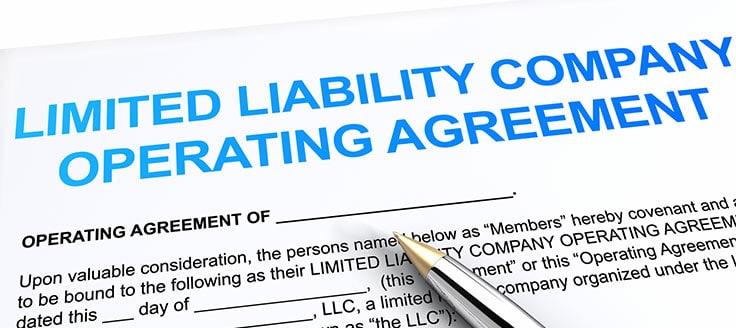Started a small business? The next logical step is incorporating it.
This is a crucial step if you have hired or intend to hire employees. Incorporating your business gives you asset and liability protections, along with other benefits.
Some small business owners put off incorporating because they are wary of going through the process. Here’s everything you need to know about how to incorporate a business.
Types of Corporations
There are four main types of corporations and organizations you should be aware of:
- C corporations (C corps)
- S corporations (S corps)
- Limited liability companies (LLCs)
- Nonprofits
Each type provides similar benefits but operates differently for tax and liability purposes.
C Corporations
A C corporation is an incorporated business is a legal entity that is distinct from the company’s owners or its shareholders. A C corp can have its own bank account, take and be the subject of legal actions, establish its own credit and purchase property. They are taxed as separate entities from their shareholders.
Most major companies are C corps.
S Corporations
An S corporation functions similarly to a C corp, although it is limited to 100 shareholders. An S corp provides shareholders with limited liability, but it is considered a pass-through entity for taxation purposes. This allows shareholders to avoid double taxation, in which the business itself is taxed followed by its shareholders.
Forming an S corp is a popular option for sole proprietors, partnerships and small businesses because of the tax benefits.
Limited Liability Companies
While an LLC isn’t technically a corporation, it functions in much the same way as other types of corporations for liability purposes. LLCs are formed with articles of organization rather than articles of corporation. They are usually taxed like sole proprietorships, but they provide owners with liability protection.
Forming an LLC is one of the most popular ways for small businesses to organize.
Nonprofits
A nonprofit is an incorporated entity which performs activities, enters into transactions and can own assets, but isn’t designed to generate profits. Although a nonprofit can generate revenue and earnings, they must be used to further the organization’s nonbusiness goals.
Many charities and foundations are nonprofits.
Why Should You Incorporate?
Regardless of what type of business you operate, it’s usually better to incorporate as soon as possible so you can start reaping the benefits:
Limited Liability Protection
Perhaps the most important benefit of incorporating is the ability to free yourself from personal liability.
If you operate as a sole proprietor, the law doesn’t distinguish between your personal assets and the assets of your business. If your business incurs debts or needs to pay out large sums of money due to a settlement or accident, that money must come from your personal bank account or from your other personal assets.
Limited liability means your company is a separate entity that is liable for its own debts. If the worst comes to pass, your company can file for bankruptcy protection on its own while your personal assets are protected.
Potential Tax Advantages
Incorporating could lower your tax bill, but it doesn’t always. For example, if you create a C corp, you may wind up paying more in taxes than you did as a sole proprietor because your business will be taxed before income is passed on to you. Then, you will be subsequently taxed as an individual for that income.
For this reason, many small businesses choose to organize as S corps, which don’t pay income tax and are only responsible for tax on certain built-in gains and passive income at the entity level. Instead, tax is paid on the personal income that passes through to the S corp’s shareholders.
What this means is that shareholders must be individuals or certain types of trusts and estates, not LLCs, partnerships or other types of business entities. The IRS considers S Corporation officers and shareholders to be employees who earn wages that are subject to employment taxes. Passive investors in an S Corp who earn distributions must pay income tax on those distributions.
Greater Credibility
There is a reason so many companies proudly display “Inc.” and “LLC” after their names. Incorporating provides you with a certain level of credibility that is difficult to obtain when you operate as a sole proprietor. It shows lenders and potential customers that your company is formally recognized and that you’ve taken the necessary steps to earn legitimacy.
Easier Financing
Lenders typically are more likely to provide financing to incorporated companies than to sole proprietors. As there is no separation between a sole proprietor’s assets and those of their business, they are a riskier investment.
How to Get Articles of Incorporation
Articles of incorporation typically are available on your state’s secretary of state website or at the office itself. Some law firms also provide them.
To get a copy of your articles of incorporation once you’ve incorporated your business, contact the secretary of state’s office. You may have to do this in person or over the telephone, although some states allow you to request a copy via fax, email or by writing.

How Much Does It Cost to Incorporate?
Generally, secretary of state offices charge $50 to $300 in filing fees. However, there could be additional costs. You also must consider the annual fees you’ll have to pay to keep your corporation active, which range from no cost to more than $300 a year depending on the state or territory where you are incorporated.
If you choose to hire a lawyer for this process, expect legal fees.
How to Incorporate a Business in 9 Steps
Incorporating your business is a relatively straightforward process.
Step 1: Make the Decision to Incorporate or Organize
Although organizing and incorporating is a big step in your business journey. Be sure you are ready to establish your business before taking the necessary steps. In most cases, doing so will create a new entity that is both recognized and liable under the law.
You should also decide which structure best suits your business before you file. If you operate a small business, an S corp or an LLC are typically your best options.
Step 2: Check Your Legal Standing
While most businesses won’t need to worry about their legal status, you may need to comply with zoning ordinances, regulations or licensing laws if you operate certain types of businesses. For example, food-service businesses and businesses that sell products such as alcohol and tobacco need to be licensed.
Step 3: Choose a Name and a State
To avoid running afoul of copyright and trademark law, the effective name of your business must be distinct from other businesses in the U.S. and in the state where your business is registered. Your effective name is the recognized name of your business for tax and legal purposes. Many small business owners choose to use their own names to avoid any issues.
Take Note
Some businesses choose to use a “doing business as” (DBA) name in addition to their effective entity name. For example, while your effective name may be “Tom Howard Enterprises, LLC,” your DBA may be “Tom’s Flowers.” You may need to register your DBA as well.
Most states maintain a business name database to help you check your business name against others.
You also must choose which state to incorporate your business. Some businesses choose to incorporate in other states for tax purposes or because they have no physical location, but it is generally much easier to incorporate in the state in which you operate.
Step 4: Choose a Registered Agent
The registered agent is the individual who will receive official mail on behalf of the incorporated business. This could be the owner of the business, an officer or even a business attorney.
Step 5: Create Articles of Incorporation
Acquire a blank set of articles of incorporation from your state’s secretary of state office. Some law offices have templates, as well.
This is a relatively simple document that contains information about your business. Some states require you to explain your purpose or provide the names and addresses of individuals who will serve on the board of directors (if you’re creating a C or S corp).
It’s usually a good idea to make, save and backup copies of your draft articles of incorporation.
Step 6: File Articles of Incorporation with Your State
Once you’ve drafted your articles of incorporation, file them with your state and pay the filing fee.
Step 7: Create Bylaws and a Records Book
Most states don’t require you to file corporate bylaws with your articles of incorporation and they are typically only necessary for S and C corps, though some states may require you to file them.
Bylaws are the internal rules and regulations by which your corporation will operate and be governed. They are internal documents that are kept at the primary location of your business. They generally include:
- Rules for shareholder and director meetings
- Types of stocks and shares issued
- How corporation records are kept
- How bylaws are to be amended
Your corporate records book is the official ledger to show you are in compliance with the IRS. It also is where you’ll store important documents, such as your bylaws, annual reports and minutes from your shareholder meetings.
Step 8: Hold a Board Meeting
If you created an S or C corp, you should hold your first board meeting to officially adopt your bylaws and articles of incorporation. You’ll select officers for your corporation and set a timetable for future board meetings. Most states require corporations to hold board meetings at least once a year.
Step 9: Finish Any Final Bookkeeping
Once you file your articles of incorporation and they are accepted by the state, you’ve officially incorporated your business. You may have some final requirements to address, however.
For example, you should apply for an employer identification number (EIN). This is a requirement for corporations. You should also open a business bank account and you may wish to announce the formation of your corporation to the press (some states require this).
How Long Does It Take to Get Incorporated?
Now that you know how to get incorporated, you might wonder how long the process will take. Incorporation may take up to several weeks, although times may vary depending on the state. In some states, you can incorporate your business in a matter of days.
The time it takes to get incorporated also may depend on the size and complexity of your business. It also depends on whether you choose to go through the process alone, whether you use a lawyer or whether you get assistance through another type of incorporation service.













